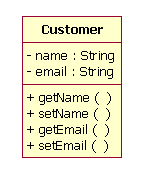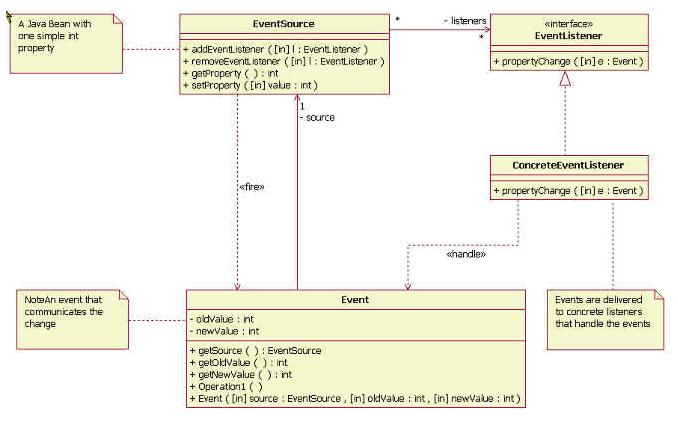| Guideline: Identifying JavaBeans |
 |
|
| Related Elements |
|---|
IntroductionThis guideline focuses on identifying and modeling JavaBeans. For more information on JavaBeans, see Concept: JavaBean. Identifying JavaBeansJavaBeans are Java classes, which are written according to conventions of the JavaBeans component model. JavaBeans can be used in their simple form, where a JavaBean exposes properties through its getters and setters, but fires no events. Such a JavaBean would fall under the recommended practice of naming getters and setters for fields of plain Java classes. This type of JavaBean is commonly used in Java Server Pages, where it acts as a carrier of data from a form in a Web page. An additional level of sophistication can be added if we want to allow other parties to be notified upon change or attempt of change of a JavaBean property. In this case, JavaBean needs to be designed so that it fires events describing the change of the property.
JavaBeans which fire (and handle) events are common in user interface frameworks such as Swing, where they are used to
implement the Model-View-Controller architectural pattern. JavaBeans representing the visual components often have
additional classes such as bean customizers, which allow for modification of JavaBean instances during design
time Modeling JavaBeansJava Beans are modeled as Java classes. Properties of Java Beans are not explicitly modeled; instead, they are identified through the JavaBeans naming conventions. In design diagrams, it is helpful to use dependencies showing which class fires or handles events. Event listeners are introduced as interfaces, which are realized by their concrete implementations.
|
© Copyright IBM Corp. 1987, 2006. All Rights Reserved. |


